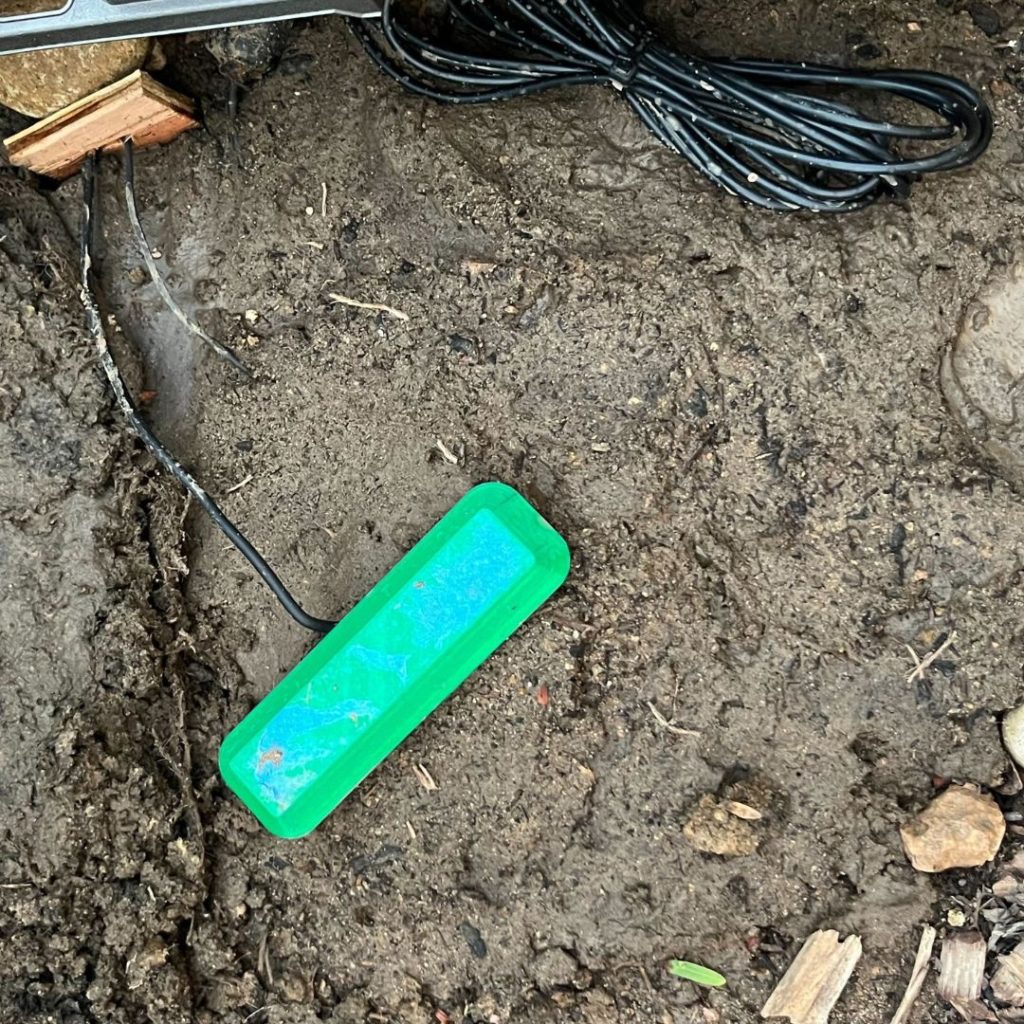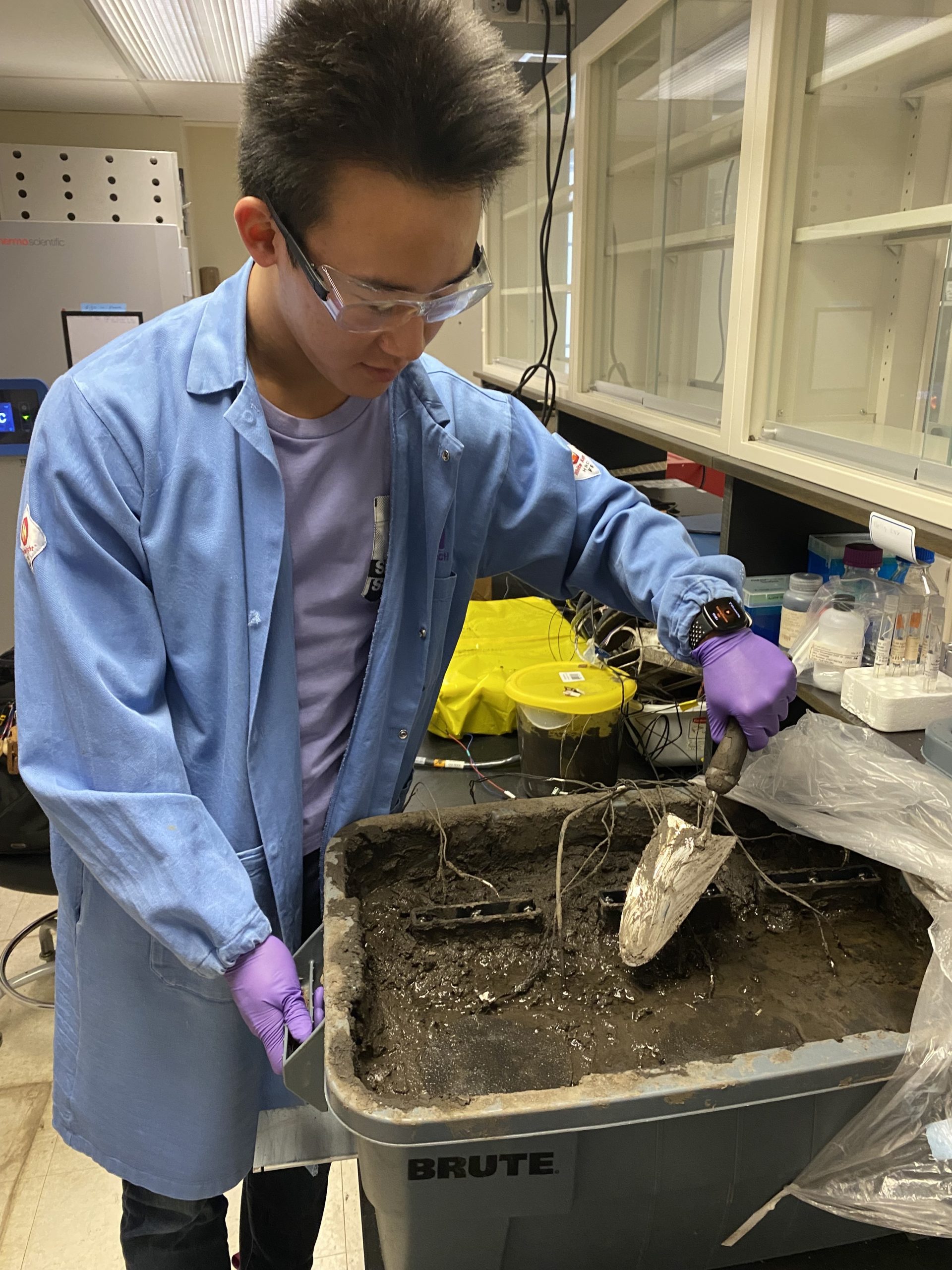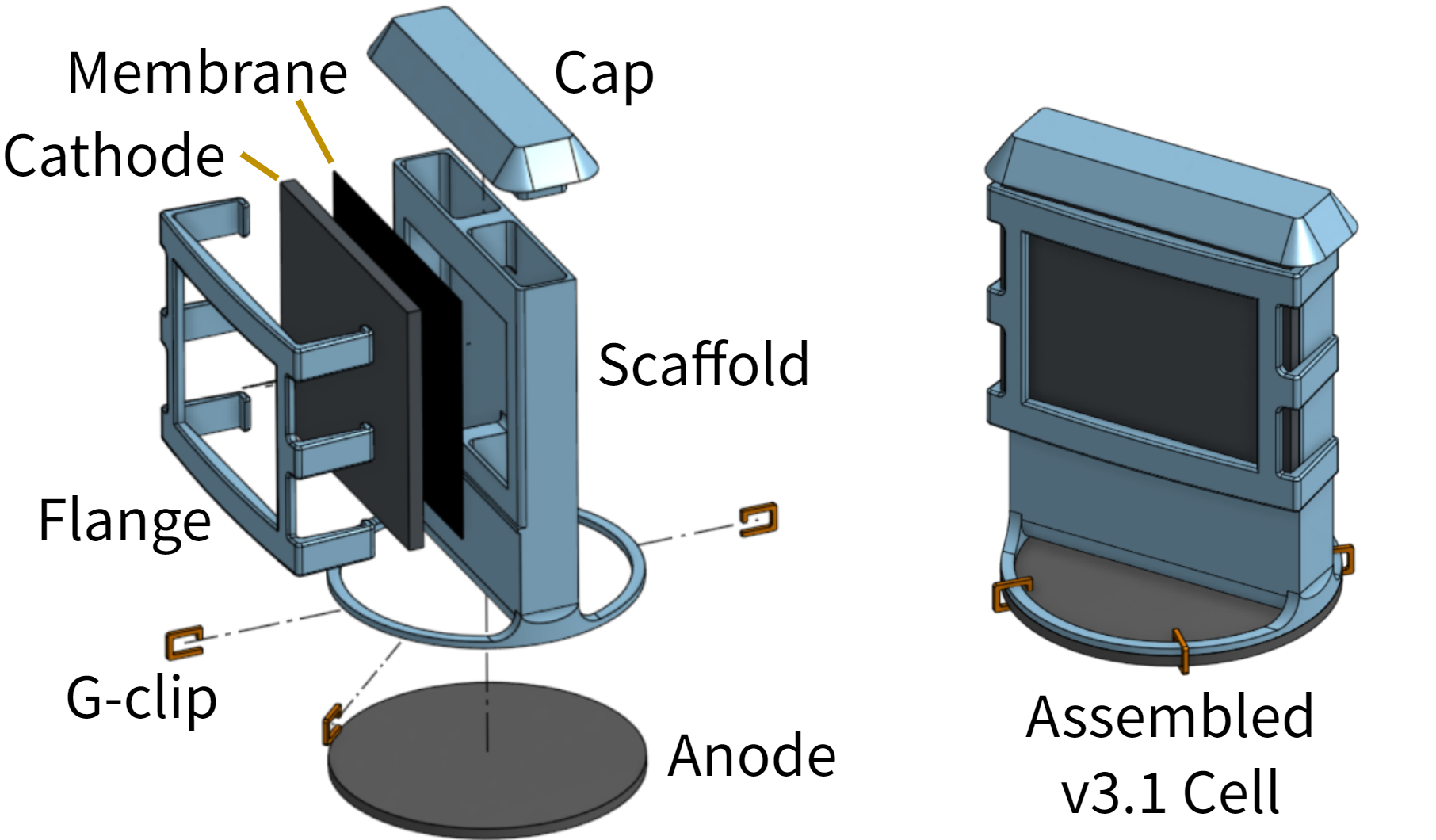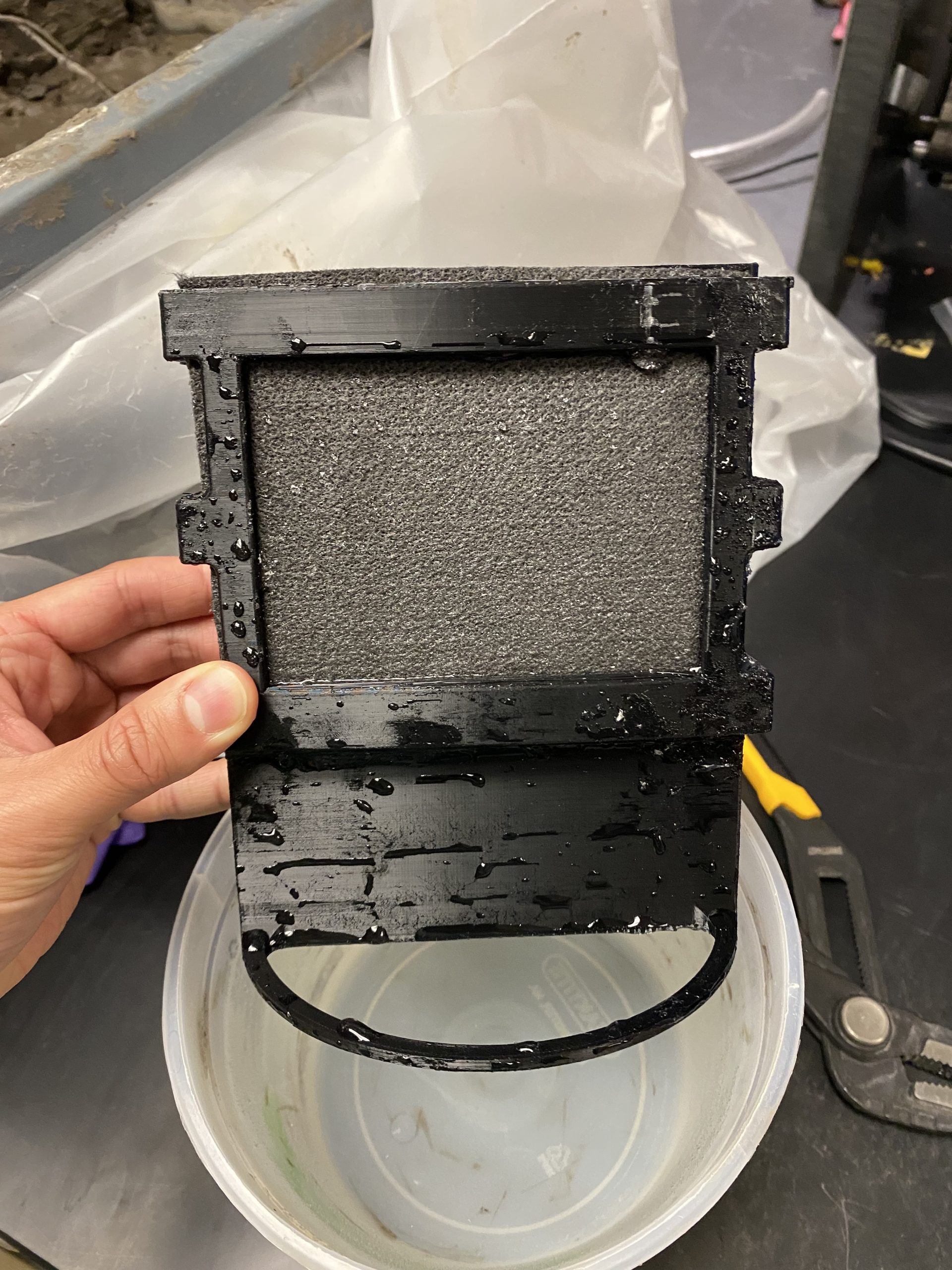Dirt-powered fuel cell runs forever

A team of researchers led by Northwestern University has developed a new fuel cell that harvests energy from microbes living in the dirt. This new technology harvests energy from microbes in the soil to power sensors and communications. This could provide a sustainable, renewable alternative to batteries, which contain toxic, flammable chemicals, are associated with conflict-ridden supply chains and contribute to the ever-growing problem of electronic waste. The authors also provide building instructions so that anyone can build this alternative battery themselves.
Key messages summarized:
- New fuel cell uses naturally occurring microbes to generate electricity
- Ground-operated sensors successfully monitor soil moisture and detect contact
- The new technology was robust enough to withstand drier soil conditions and flooding
- Fuel cell could replace batteries in sensors for precision agriculture
 To test the new fuel cell, the researchers fitted it with sensors to measure soil moisture and detect touch, which could be useful for detecting passing animals. To enable wireless communication, the researchers also equipped the ground-powered sensor with a tiny antenna that transmits data to a neighboring base station by reflecting existing radio frequency signals.
To test the new fuel cell, the researchers fitted it with sensors to measure soil moisture and detect touch, which could be useful for detecting passing animals. To enable wireless communication, the researchers also equipped the ground-powered sensor with a tiny antenna that transmits data to a neighboring base station by reflecting existing radio frequency signals.
Not only did the fuel cell work in both wet and dry conditions, but its performance outperformed similar technologies by 120%.
Lead researcher Bill Yen in the lab at Northwestern University
The research results were published on January 12, 2024 in the Proceedings of the Association for Computing Machinery on Interactive, Mobile, Wearable and Ubiquitous Technologies. The authors of the study are also releasing all designs, instructions and simulation tools to the public so that others can use and build on the research results.
"These microbes are ubiquitous; they already live everywhere in the soil," said George Wells of Northwestern University, one of the lead authors of the study. "We can use very simple engineering systems to capture their electricity. We won't be able to power entire cities with this energy. But we can capture tiny amounts of energy to power practical low-power applications."
Wells is an associate professor of civil and environmental engineering at Northwestern University's McCormick School of Engineering. Yen, who is now pursuing a doctorate at Stanford University, began this project while he was still a student doing research in Wells' lab.
"As long as there is organic carbon in the soil that the microbes can break down, the fuel cell can potentially last forever."
Bill Yen
Solutions for a dirty job
In recent years, farmers around the world have increasingly adopted precision agriculture as a strategy to improve crop yields. This technology-enabled approach relies on the accurate measurement of moisture, nutrients and pollutants in the soil to make decisions to improve crop health. This requires an extensive network of electronic devices to continuously collect environmental data.
Unsuccessful efforts
First introduced in 1911, soil-based microbial fuel cells (MFCs) work like a battery - with an anode, cathode and electrolyte. However, instead of using chemicals to generate electricity, MFCs harvest power from bacteria that naturally release electrons to nearby conductors. When these electrons flow from the anode to the cathode, a circuit is created.
However, for microbial fuel cells to work undisturbed, they need to be supplied with moisture and oxygen - which is difficult if they are buried underground in dry dirt.
"Although the concept of microbial fuel cells has been around for more than a century, their unreliable performance and low output power have hindered efforts to put them to practical use, especially in low-humidity conditions," Yen said.
Victorious geometry
With these challenges in mind, Yen and his team embarked on a two-year journey to develop a practical, reliable ground-based MFC. During this expedition, four different versions were developed - and compared. First, the researchers spent a total of nine months collecting data on the performance of each design. Then they tested their final version in an outdoor garden.
The prototype that performed best worked both in dry conditions and in a waterlogged environment. The secret of its success: its geometry. Instead of a traditional design in which the anode and cathode are arranged parallel to each other, the winning fuel cell used a vertical design.

This diagram shows the structure of the device
The anode made of carbon felt (an inexpensive, abundant conductor that captures the electrons of the microbes) lies horizontally on the soil surface. The cathode is made of an inert, conductive metal and sits vertically on the anode.
Although the entire unit is buried, the vertical design ensures that the top end is flush with the ground surface. A 3D-printed cap rests on the top of the device to prevent debris from falling inside. A hole at the top and an empty air chamber running alongside the cathode ensure a steady flow of air.
The lower end of the cathode remains deep below the surface so that it is supplied with moisture by the moist soil surrounding it - even if the surface soil dries out in the sunlight. The researchers have also coated part of the cathode with waterproof material so that it can breathe in the event of flooding. And after a possible flood, the cathode can dry out gradually rather than all at once thanks to the vertical design.
The resulting fuel cell generated on average 68 times more electricity than was required to operate the sensors. It was also robust enough to withstand large changes in soil moisture - from reasonably dry (41% water by volume) to completely submerged.

The clean fuel cell in the laboratory
All components available in DIY stores
The researchers say that all the components for their soil-based MFC can be purchased at a local hardware store. Next, they plan to develop a soil-based MFC made from fully biodegradable materials. Both designs bypass complicated supply chains and avoid the use of conflict minerals.
"With the COVID-19 pandemic, we all realized how a crisis can disrupt the global supply chain for electronics," said study co-author Josiah Hester, a former Northwestern University faculty member who now works at the Georgia Institute of Technology. "We want to build devices that utilize local supply chains and low-cost materials so that computers are accessible to all communities."
A great idea, we think!
All photos including cover photo ©️Bill Yen/Northwestern University






